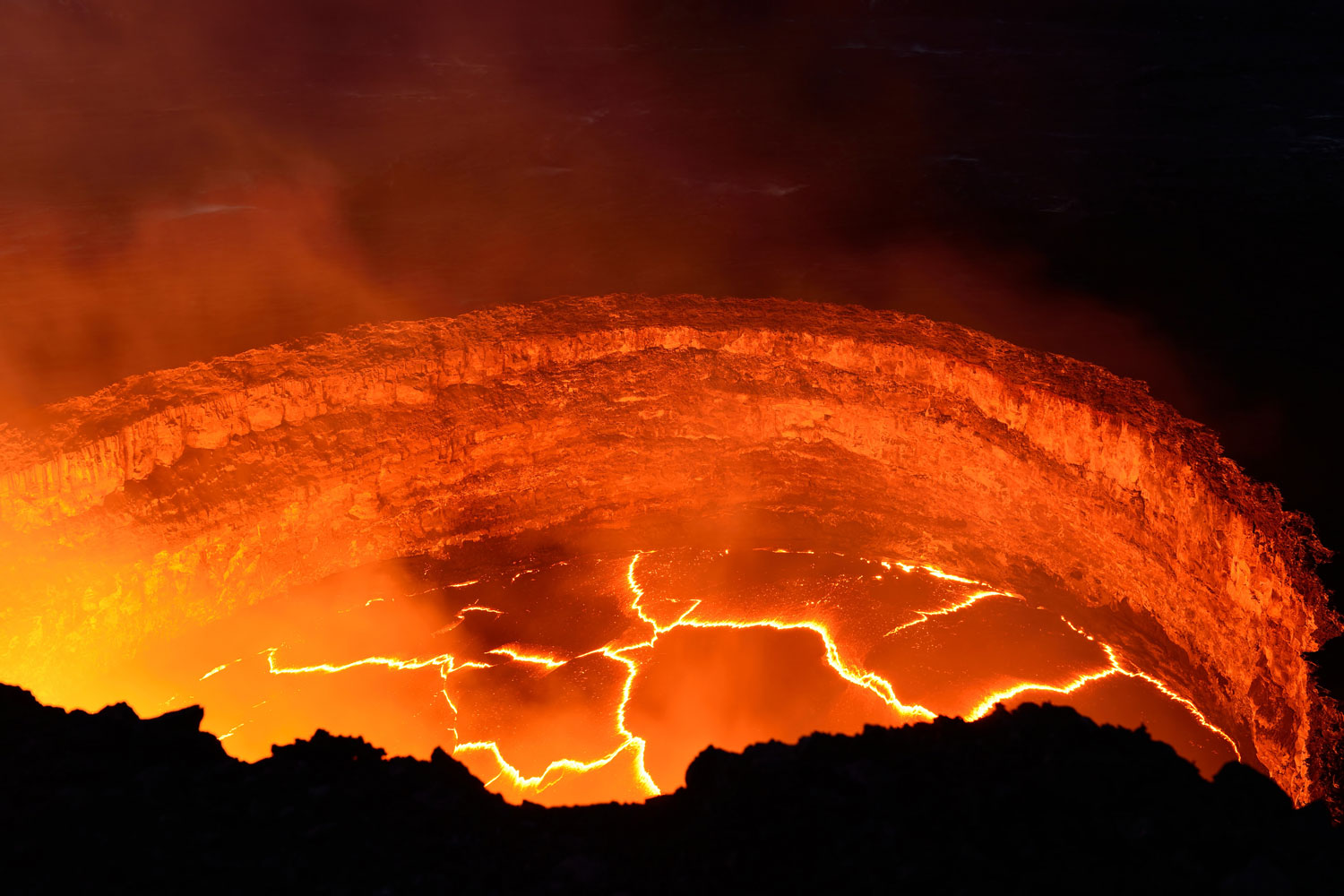Puzzling patches in Earth’s interior billions of years in the making, Stanford researchers find
Mysterious patches on the planet’s core that dampen seismic waves could be the result of ancient seawater chemically reacting with iron under extreme conditions.
A chemical reaction between ancient seawater and iron in Earth’s mantle over eons could explain the formation of mysterious blobs in the planet’s interior that dampen passing seismic waves, Stanford researchers say.

Inside view of an active volcano with lava flow at Hawaii Volcanoes National Park. A new study of unusual rock patches at the core-mantle boundary could provide insights into other deep Earth processes. (Image credit: Shutterstock)
These thin patches of dense rock have confounded scientists for decades. They are located about 1,800 miles (2,900 kilometers) beneath Earth’s surface just above the core-mantle boundary that separates the planet’s molten metal heart from its rocky shell. They stand out from their surroundings because seismic waves generated by earthquakes are slowed down by a tenth to a third of their normal speeds as they sweep across.
Aside from being a scientific anomaly, these dampening zones could also provide insights into other deep Earth processes, said study leader Wendy Mao, an associate professor of geological sciences at Stanford’s School of Earth, Energy & Environmental Sciences.
The fact that the regions, known as ultra low velocity zones, or ULVZs, occur at the core-mantle boundary is intriguing because it suggests that Earth’s core and mantle interact to a much greater extent than has been previously appreciated.
“There’s also evidence that ULVZs are the origins of molten plumes that feed volcanoes at the surface,” Mao said. “So ULVZs could hint at much greater cycling between the core, mantle and surface of Earth than we thought.”
High pressure iron
Due to their extreme depths, the composition and origins of the zones are a mystery. But in a new study, published online this week in the journal Nature, an international team of researchers led by Mao have put forth a new theory to explain how they form.
The mechanism they propose is based on their recent discovery of a new type of oxygen-rich iron compound that forms spontaneously under extreme heat and pressure – conditions like those found in Earth’s lowermost mantle region.
In lab experiments performed at the Argonne National Laboratory in Illinois, Mao’s team compressed slivers of iron foil suspended in pure water to about 90 gigapascals – or about 900,000 times the pressure at sea level – and laser-heated them to 3,000–4,000 degrees Fahrenheit.
The result of this double whammy is a super-oxygenated form of iron that is packed with about a third more oxygen molecules than most oxygen-rich iron oxides that form under surface conditions.
Seismic slowing
The team went on to show that their compound shares many of the seismic wave-dampening properties exhibited by the low velocity zones.
“The low sound speeds we calculated for our compound match very well what is observed seismically in ULVZs,” said study first author Jin Liu, a postdoctoral researcher in Mao’s lab.
What’s more, the oxygen-rich iron the team created in the lab could form just as easily at the core-mantle boundary. “This reaction requires only iron and water,” Mao said. “As long as you have these components and the right temperature and pressure conditions, this compound likes to form.”
In the new study, the scientists propose that seawater, in the form of hydrated minerals on the seafloor, has been carried into the planet’s deep interior over billions of years through a process called subduction, in which one section of the Earth’s crust and upper mantle sinks beneath another.
Only a relatively small amount of subducted water would be needed to explain the zones, the scientists say. “If just one tenth of the mass of water in Earth’s oceans found its way to the core-mantle boundary over geologic time, it would be sufficient,” Liu said.
The study also includes authors from the Center for High Pressure Science and Technology Advanced Research; the University of Science and Technology of China; the Carnegie Institution of Washington; the University of Chicago; and the SLAC National Accelerator Laboratory.
The research was supported by the U.S. National Science Foundation, the U.S. Department of Energy, the Deep Carbon Project and the National Natural Science Foundation of China.
